CryoArks core facilities are currently based at the Natural History Museum and at the National Museums Scotland and the Royal Zoological Society of Scotland.
Molecular Collections Facility at the Natural History Museum, London
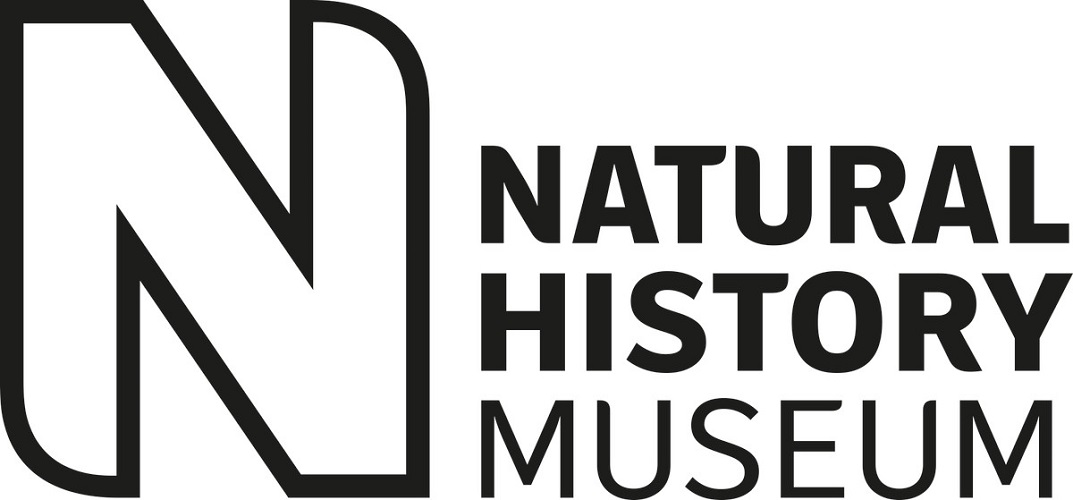
The Natural History Museum’s Molecular Collections facility (MCf) is a centralised biorepository for collections destined for or created by molecular research, established in 2011 and launched in February 2012. MCf now holds ~1.5M molecular specimens and samples of species from across the Tree of Life including flagship collections e.g. UK Insect Pollinator Initiative Archive (~50K UK insect pollinator specimens), Frozen Ark material (tissues, DNAs and cells from endangered animals), the Schistosomiasis Collection at the NHM (SCAN), large vertebrate collections, the Abyssline Deep Sea Collection and other animal species, plus a wide range of plant material including ferns and flowering plants.
MCf material is stored at -20˚C, -80˚C and -196˚C (liquid nitrogen) in the cryofacility, and at room temperature (silica gel and FTA formats).
The MCf actively networks with many UK, EU and global biobanking, biological resource centres, and natural history collection societies, including ISBER (International Society for Biological and Environmental Repositories), ESBB (European and Middle Eastern Society for Biopreservation and Biobanking), UKBRCN (UK Biological Resource Centre Network), GGBN (Global Genome Biodiversity Network), and SPNHC (Society for the Preservation of Natural History Collections), plus SYNTHESYS+ (an integrated European infrastructure for researchers) and DiSSCo (Distributed Systems of Scientific Collections) initiatives, and is contributing to the Earth Biogenome Project (Darwin Tree of Life/UK Genomes).
CryoArks has storage space at the MCf for up to 150,000 samples. This capacity will be available to store new samples collected under the CryoArks umbrella and also duplicates of key specimens (e.g. high priority taxonomic groups, unique specimens, material from endangered species and extinct populations) found in legacy frozen collections across the country.
MCf Storage
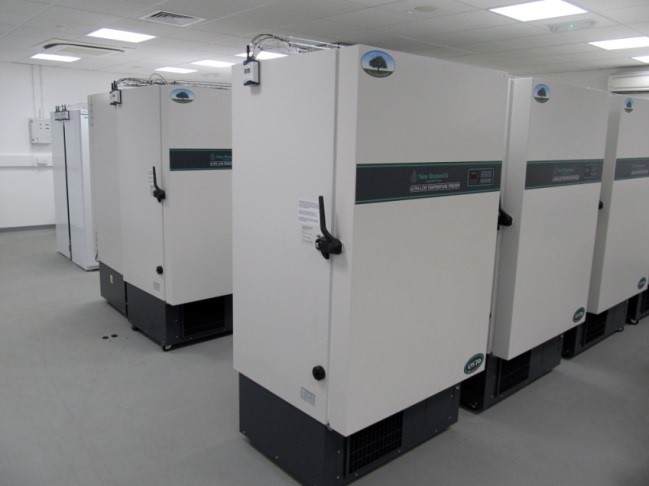
Ultra-cold freezers
Each of the 16 ultra-cold freezers (-80°C) at the MCf holds up to 65,000 frozen samples
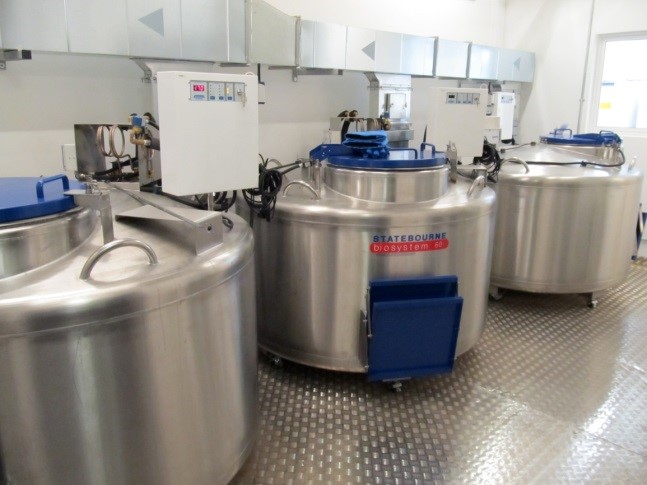
Liquid nitrogen
Three liquid nitrogen tanks with capacity to store up to 360,000 samples at -180°C (LN2 vapour)
CONTACT
Ms Kirsty Lloyd
Molecular Collections Facility
Natural History Museum, Cromwell Road
London SW7 5BD, UK
Biobank Facility at the National Museums Scotland, Edinburgh

National Museums Scotland has one of the largest multidisciplinary collections in the world which is exhibited across four museum sites (the National Museum of Scotland, the National War Museum, the National Museum of Flight, and the National Museum of Rural Life). The National Museums Collection Centre (NMCC) is home to millions of specimens and objects and houses state-of-the-art facilities for conservation, specimen preparation and academic research. Among the collections, there are more than 10 million zoological specimens, including among the largest collections of marine mammals and birds’ eggs in the world.
An average of 600 specimens are received each year that provide viable sources of genetic material. With capacity for storing ~65,000 specimens at -80°C, the frozen tissue collection currently contains over 10,000 wild and zoo-based animals. NMS work closely with many universities and zoos, including RZSS, the Durrell Wildlife Conservation Trust, the Zoological Society of London, the North of England Zoological Society and Twycross Zoo. Almost every tissue sample that is preserved for DNA analysis is associated with a skin, skeleton or other specimen held in the museum’s collection.
NMS Storage
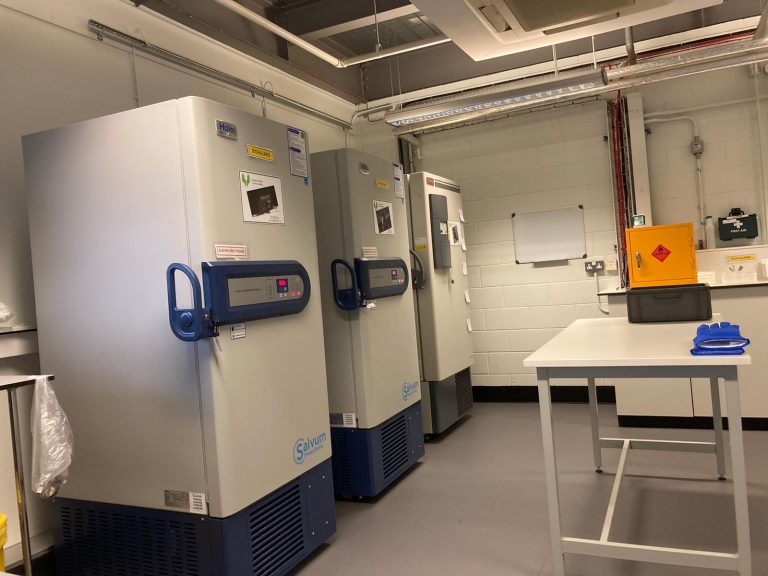
Ultra-cold freezers
The 3 ultra-cold freezers (2X -80°C, 1X -40°C) at the NMS hold up to 80,000 frozen samples
CONTACT
Dr Gill Murray Dickson
National Museums Scotland,
Chambers Street
Edinburgh EH1 1JF, UK
EAZA Biobank at the Royal Zoological Society of Scotland, Edinburgh
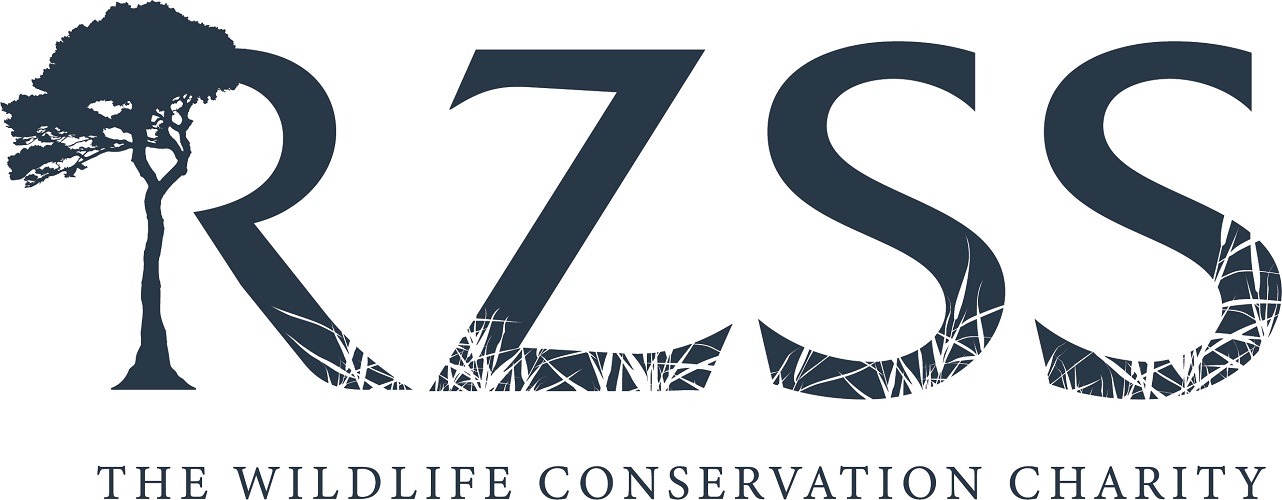
Established in 1909, RZSS is a registered charity that has promoted awareness and conservation of rare and endangered species for over 100 years. RZSS owns and runs two zoos, Edinburgh Zoo and the Highland Wildlife Park that house over 185 species. RZSS supports a wide variety of education, research and conservation projects, and is an active member of both the European Association of Zoos and Aquaria (EAZA) and the British Association of Zoos and Aquaria (BIAZA). At RZSS Edinburgh Zoo, the WildGenes laboratory manages a wide range of conservation genetic research projects and maintains a new, purpose-built facility that houses the UK’s EAZA Biobank hub. This provides capacity for storing a further 80,000 specimens at -80°C.
RZSS Storage
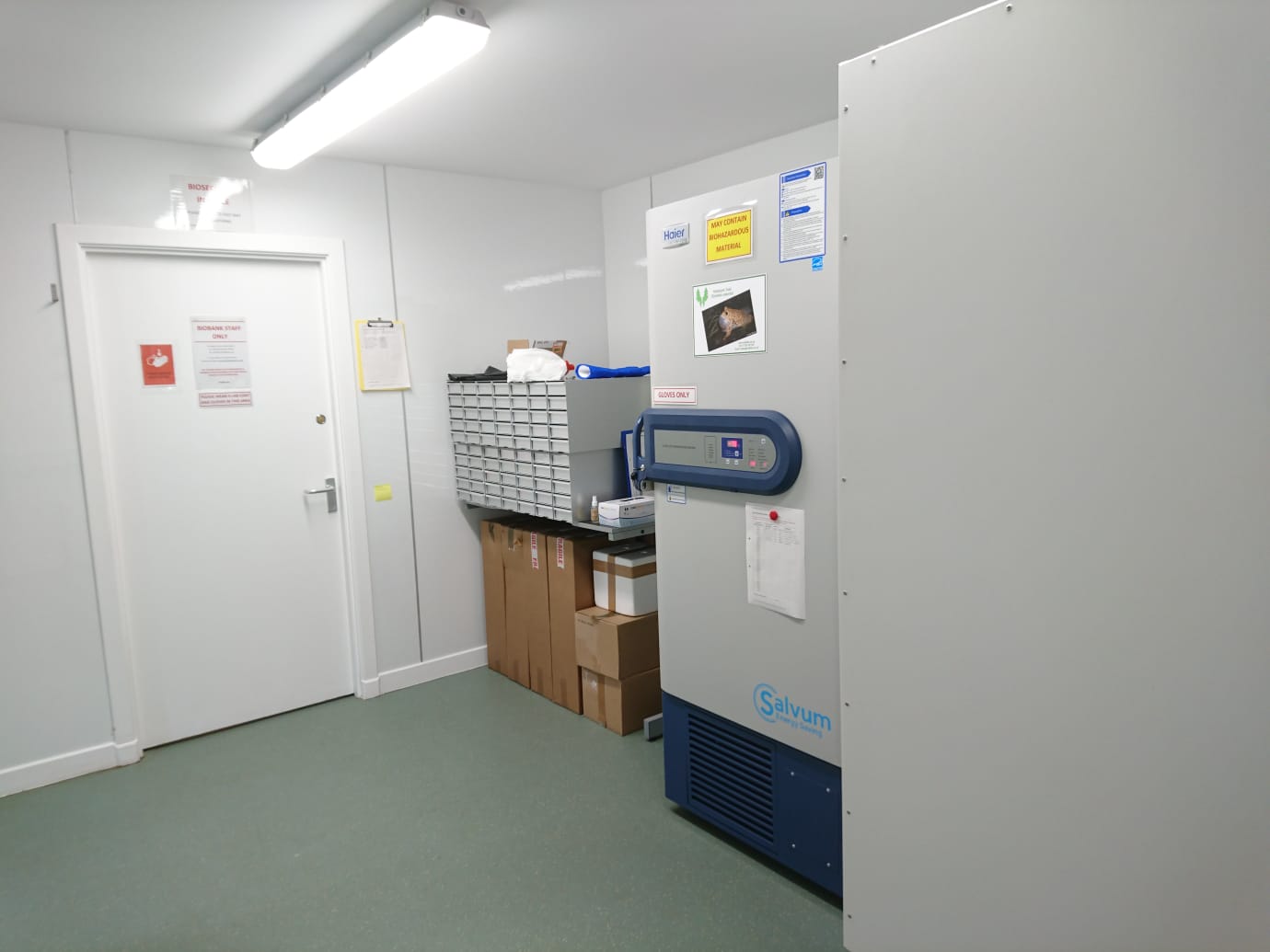
Ultra-cold freezers
Each of the 2 ultra-cold freezers (-80°C) at the RZSS holds up to 40,000 frozen samples
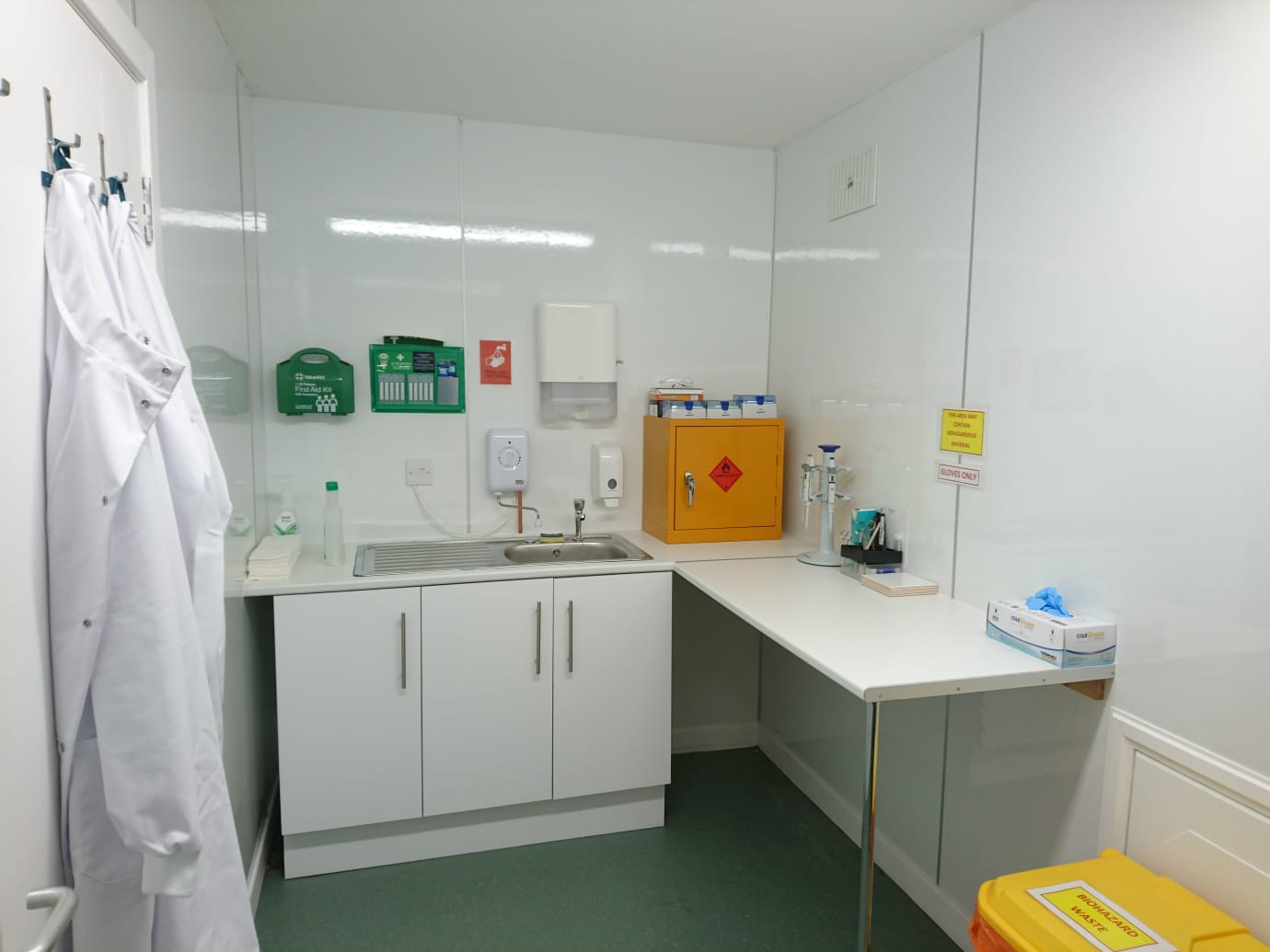
Sample processing laboratory
The RZSS laboratory is used to process collection donations and prepare samples for shipping to fulfill loan requests
CONTACT
Dr Gill Murray Dickson
The Royal Zoological Society of Scotland
Edinburgh Zoo
134 Corstorphine Road
Edinburgh EH12 6TS, UK


